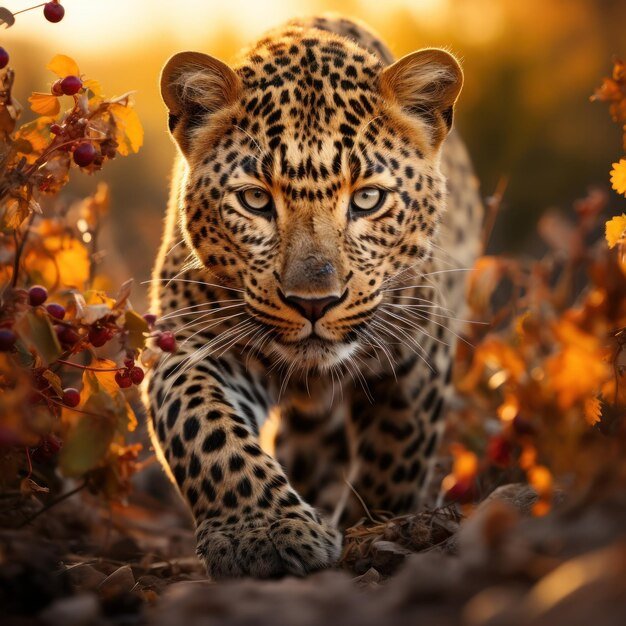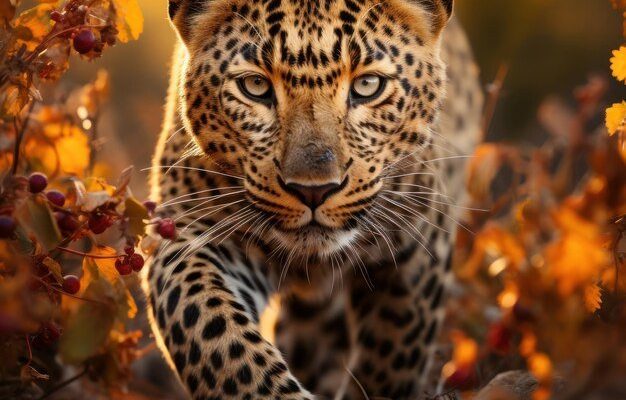
Leopards are more than just beautiful big cats with striking spots. Their presence affects the population dynamics of other species and impacts their habitats in several ways. So, let’s dive deeper into how these stunning predators shape their environment and why that matters to us all.
The Role of the Leopard as a Top Predator
Leopards are classified as top predators, meaning they’re at the top of the food chain in their habitat. This position is crucial because it helps regulate the populations of other animals. For instance, if a particular prey species like antelopes were to grow too numerous, they would overgraze vegetation, leading to habitat degradation. Here’s the thing: leopards help keep these populations in check. By preying on the weak or sick within herds, leopards ensure that only the healthiest individuals survive and reproduce.
This natural balance helps promote biodiversity in ecosystems. When leopards hunt, they help create a healthier population of prey species. Think of it like pruning a garden; removing the overgrown parts allows the healthier plants to thrive. In this way, leopards indirectly support the growth of various other species, including plants, by maintaining a balanced ecosystem.
Impact on Prey Species
The relationship between leopards and their prey is fascinating. Prey species, such as springbok or baboons, often have to adapt their behaviors due to the presence of leopards. For example, they may choose to stay in larger groups for protection or adjust their grazing habits to avoid areas where leopards are more active. This constant dance of adaptation benefits the ecosystem as it encourages resilience among species.
Leopards also tend to hunt at different times of day, which can create a ripple effect in the behavior of their prey. Some animals may become more active in the early morning or late afternoon to avoid encounters, while others may learn to be more vigilant. This change in prey behavior can lead to healthier ecosystems, as these animals are finding food in areas less affected by overgrazing.
Habitat Selection and Preservation
Leopards are highly adaptable and can live in various environments, from rainforests to savannas. Their choice of habitat significantly influences the types of plants and animals that thrive in those areas. For instance, leopards favor dense cover for hunting and resting, which means they often prefer areas rich in biodiversity. As leopards move through these landscapes, they also create trails that other animals may use, leading to a more interconnected ecosystem.
By maintaining their habitats—like forests or mountainous regions—leopards contribute to the preservation of these ecosystems. When we lose leopards due to habitat destruction or poaching, we risk destabilizing these areas. So, preserving leopards is not just about protecting a single species; it’s about safeguarding entire ecosystems.
Scavengers and Decomposers: The Circle of Life
Another interesting aspect of leopards is how their hunting habits benefit scavengers. After leopards finish a meal, they often leave behind carcasses. This leftover food becomes vital for scavengers, such as vultures, hyenas, and various insects, which help break down the remains and recycle nutrients back into the environment.
This scavenging process is essential for maintaining soil health, promoting plant growth, and supporting a variety of other animals. Without leopards, there would be fewer carcasses available, which means fewer food resources for these scavengers. It’s like ensuring there’s enough food at a potluck; if one dish is missing, it affects the whole gathering.
Conservation Efforts and Their Importance
With the increasing threats to leopards—from habitat loss to poaching—conservation efforts are more vital than ever. By protecting leopards, we’re also protecting entire ecosystems. The fight to conserve these magnificent animals often involves local communities, who may rely on the land and its resources for their livelihoods.
Engaging with local communities can lead to innovative conservation strategies. For example, educating people on the importance of leopards can foster respect and cooperation in wildlife preservation. Furthermore, eco-tourism can provide economic incentives for communities that protect leopards and their habitats, turning conservation into a win-win situation.
The Human Connection
Leopards don’t just exist in a vacuum; they are woven into the fabric of human culture and society. From ancient myths to modern stories, their stealth and beauty have inspired countless tales. By acknowledging the role of leopards in our ecosystems, we also take a step towards understanding our connection with nature.
You might be wondering how you can help in this effort. Supporting wildlife preservation organizations, visiting eco-friendly tourism businesses, or even spreading awareness about the importance of leopards can contribute to their survival.
Final Thoughts
Understanding the leopard’s role in its ecosystem reveals a complex interplay of life, where every creature counts. From regulating prey populations to supporting scavengers and contributing to biodiversity, leopards are truly irreplaceable. By focusing on their conservation, we take steps toward ensuring healthier ecosystems not just for leopards, but for all living beings.
The next time you think about how ecosystems function, remember that leopards are more than just beautiful animals. They are essential players in the grand tapestry of life. Their survival impacts us all, reminding us of the delicate balance that exists in nature. Isn’t it worth protecting?

